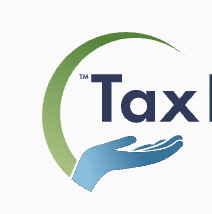
According to the MBO Partners’ State of Independence survey, more than 72.9 million Americans are freelancing in some capacity. While this flexibility offers freedom, it also comes with significant tax burdens that catch many self-employed workers off guard.
This guide covers tax relief strategies for self-employed individuals, including how to handle tax debt, utilize IRS relief programs, and when to consider assistance from top tax relief companies.
Key Insights
- Self-employment tax adds 15.3% to your income tax bill, including employer and employee portions of Social Security and Medicare taxes.
- Quarterly estimated payments are mandatory for most gig workers earning over $1,000 annually from self-employment.
- Relief programs include installment agreements, penalty abatement, Currently Not Collectible status, and Offers in Compromise.
Why Self-Employed Tax Issues Are Different
No Automatic Withholding Creates Cash Flow Problems
Traditional employees have taxes withheld from every paycheck. Gig workers don't. You receive full payment and must set aside tax money yourself. This creates several challenges, such as:
- Inconsistent income: Fluctuating earnings make it hard to calculate how much to save
- Cash flow temptation: When you have the full payment in hand, it's easy to spend tax money before quarterly deadlines
- Widespread non-compliance: Federal sources show that most gig workers lack proper tax guidance and are significantly more likely to under-report income or miss estimated tax payments
Self-Employment Tax Doubles Your Burden
W-2 employees pay 7.65% for Social Security and Medicare, with their employer matching another 7.65%. As a self-employed worker, you pay both portions—the full 15.3% self-employment tax—on top of regular income tax.
Example: Net income of $40,000 results in approximately $6,120 in self-employment tax alone, plus federal income tax (potentially $2,400–$3,500+ at the 12% bracket). Total tax bill: $8,500–$9,500+.
Record-Keeping Requires Discipline
Self-employed workers must maintain detailed documentation:
- Track all income sources: 1099-NEC, 1099-K, cash payments, and app-based earnings.
- Document every deductible expense: Keep receipts, mileage logs, and invoices.
- Separate business from personal use: Maintain clear records for shared assets like vehicles or home offices.
Poor documentation leads to either overpaying taxes or facing audit problems.
Common Tax Problems for Gig Workers
Unfiled Tax Returns
Many gig workers delay filing when they can't afford to pay, making the problem worse. The IRS charges a Failure to File penalty of 5% per month (up to 25%)—ten times higher than the 0.5% Failure to Pay penalty.
According to the IRS, the gross tax gap for Tax Year 2022 was estimated at about $696 billion, and the non-filing component (tax not paid because returns were not filed) accounted for ≈ $63 billion of that. The voluntary compliance rate is estimated at 85.0%
Underestimated Quarterly Payments
The IRS expects estimated payments to equal at least 90% of the current year's liability or 100% of the previous year's liability (110% for higher earners). Underestimation causes penalties even if you pay in full by April.
Common reasons include rapid income growth, multiple income streams, and overlooked state taxes.
Large Lump-Sum Liabilities
Gig workers who skip quarterly payments face massive tax bills at filing time. Someone earning $75,000 might owe $15,000-$20,000 or more in federal taxes alone.
Imagine a full-time rideshare driver who earns about $55,000 in a year but doesn’t realize that no taxes are being withheld. When he files his return, he owes more than $9,000—mostly because of the 15.3% self-employment tax on top of regular income tax.
Tax Relief Options for Independent Contractors
1. IRS Installment Agreements
Installment agreements let you pay your tax debt over time through monthly payments. Two types are available:
Short-Term Payment Plans (120 Days or Less)
- No setup fee: Free to arrange
- Balance limit: Available for amounts under $100,000
- Payment timeline: Must pay in full within 120 days
Long-Term Installment Agreements
- Payment timeline: Monthly payments extending beyond 120 days (up to 72 months for balances under $50,000).
- Setup fees: $31–$225, depending on your payment method.
- Penalty reduction: Lowers the Failure to Pay penalty from 0.5% to 0.25% per month.
- Online availability: Can be set up online for balances under $50,000.
When Installment Agreements Make Sense for Gig Workers
An installment agreement is often the right choice when you:
- Have a clear, predictable tax liability.
- Earn a steady (but modest) income from gig work.
- Can afford fixed monthly payments.
- Don't qualify for more drastic relief like an Offer in Compromise or Currently Not Collectible status.
- Want a simple, predictable way to stay compliant while rebuilding
2. Penalty Abatement for Reasonable Cause
The IRS may waive penalties if you can demonstrate reasonable cause for late filing or payment. Qualifying circumstances include:
- First-time penalty abatement: Clean three-year compliance history.
- Serious illness: Medical conditions that prevented filing or payment.
- Natural disaster: Events beyond your control.
- Death of immediate family member: Loss affecting your ability to comply.
- Incorrect IRS advice: Following erroneous guidance from the IRS.
3. Currently Not Collectible (CNC) Status
If paying your tax debt would prevent you from covering basic living expenses, the IRS may temporarily suspend collection activities with a Currently Not Collectible status.
Limitations of CNC
- Debt remains: You still owe the full amount plus interest.
- Periodic reviews: The IRS reassesses your financial situation regularly.
- Collection period continues: The 10-year statute of limitations keeps running.
When CNC Makes Sense for Gig Workers
This status is appropriate when paying the tax bill would leave you unable to afford necessities like housing, food, transportation, and healthcare. The IRS reviews your financial snapshot to confirm there's no disposable income after allowable living expenses.
Required Documentation for CNC
- Form 433-F: Collection Information Statement for individuals.
- Bank statements: Recent account activity.
- Income proof: Payout reports from each gig platform.
- Profit and loss statement: Net gig earnings after business expenses (mileage, phone, supplies).
4. Offer in Compromise (OIC)
An Offer in Compromise (OIC) lets you settle your tax debt for less than the full amount. The IRS evaluates:
- Ability to pay: Your realistic capacity to pay the debt.
- Income versus expenses: Monthly cash flow analysis.
- Asset value: Equity in property and accounts.
Self-employed workers face extra scrutiny:
- Profit and loss statements: Detailed business financials required.
- Business expense justification: Must prove expenses are legitimate and necessary.
- Income variability explanation: Must demonstrate fluctuations aren't voluntary underemployment.
OIC Costs and Timeline
| Requirement | Details |
|---|---|
| Application fee | $205 (waived for low-income taxpayers) |
| Initial payment | 20% of offer amount (lump sum) or first installment payment |
| Processing time | 6–12 months |
| Typical settlements | Often 10–20% of total debt |
Smart Tax Planning to Avoid Future Liability
1. Maximize Business Deductions
Home Office Deduction
- Simplified method: $5 per square foot, up to 300 square feet (maximum $1,500 deduction)
- Regular method: Percentage of actual home expenses based on exclusive business use area
Vehicle Expenses
- Standard mileage rate: $0.70 per business mile (2025 rate)
- Actual expense method: Depreciation, gas, insurance, and repairs proportional to business use percentage
- Required documentation: Detailed mileage log with dates, destinations, and business purpose
Other Key Deductions
- Health insurance premiums: 100% deductible for self-employed individuals
- Professional development: Courses, certifications, and training
- Business insurance and software: Subscriptions and licenses
- Office supplies and equipment: Computers, desks, printers
- Professional services: Legal and accounting fees
- Business meals: 50% deductible
Commonly missed deductions for remote workers include, simplified home-office deduction, business-use percentage for smartphones or tablets, software and app costs, and portions of internet and utility bills tied to workspace.
2. Set Aside 25-30% for Taxes
Tax professionals commonly recommend setting aside 25–30% of net self-employment income to cover both the 15.3% self-employment tax and federal income tax based on your bracket.
Create a systematic three-account system before spending any income:
- Operating account: Business income and expenses
- Tax account: Quarterly payment savings only (25-30% of gross income)
- Personal account: Owner draws for personal use
3. Use Retirement Contributions to Lower Liability
| Account Type | Contribution Limits (2025) | Best For |
|---|---|---|
| Traditional or Roth IRA | $7,000 ($8,000 if age 50+) | Earning under $50,000; want simplicity |
| Solo 401(k) | $23,500 employee deferral + ~25% employer contribution (total up to $70,000/$77,500 if 50+) | Earning $50,000–$150,000; no employees; want to save $40,000–$50,000+ annually |
| SEP IRA | Up to 25% of net income (max $70,000) | arning $150,000+; have employees; need plan flexibility |
How Retirement Accounts Reduce Taxes
Traditional IRA and Solo 401(k) employee deferrals immediately reduce your taxable income. Roth contributions don't reduce current taxes but grow tax-free.
4. Track Expenses with Technology
Use accounting software to automate record-keeping and stay audit-ready:
- Recommended tools: QuickBooks Self-Employed, FreshBooks, Expensify, MileIQ
- Key features: Automatic transaction categorization, GPS mileage tracking, bank account integration, tax category classification
How to Choose a Tax Relief Service
When to Handle It Yourself
You may not need professional help if you owe under $10,000, can afford a short-term payment plan, have clean filing compliance, or only need simple first-time penalty abatement. These situations are straightforward enough to navigate on your own using IRS online tools and resources.
When to Hire a Professional
Consider hiring an Enrolled Agent, CPA, or tax attorney if:
- Large debt: You owe over $25,000.
- Unfiled returns: You have multiple years of missing tax returns.
- IRS enforcement: You've received liens, levies, or wage garnishment notices.
- Complex relief applications: You're applying for an Offer in Compromise.
- Collection Due Process hearing: You need representation at a CDP hearing.
- Criminal exposure: You face potential criminal charges.
Red flags for gig workers: Multiple years of tax debt, platform income with no withholding, missing returns, large refunds diverted, or IRS enforcement notices make professional representation necessary rather than optional.
Questions to Ask Tax Relief Companies
| Category | Key Questions |
|---|---|
| Credentials | Are they an Enrolled Agent, CPA, or tax attorney licensed to practice before the IRS? Have you verified their good standing with licensing boards? |
| Fees | What's the total cost structure—flat rate, hourly, or results-based? What services are included? Is there a refund policy if they can't resolve your case? |
| Experience | How many self-employed or Schedule C cases have they handled? What are their success rates with payment plans and OICs? Do they understand self-employment tax complexities? |
Industry reporting suggests many firms charge investigation fees from a few hundred to ~$1,500, plus resolution fees ranging from 10–15% of the tax debt.
The Bottom Line: Tax Relief for Gig Workers
Gig workers face unique tax challenges, but the same IRS relief programs available to traditional employees apply to the self-employed, with important differences in evaluation.
Unlike traditional employees, gig workers face quarterly tax payments, self-employment tax, and complex deductions. However, targeted relief options can help you get back on track.
The key to avoiding tax errors is proactive planning: set aside 25-30% in a separate account, make quarterly payments on time, track expenses with technology, maximize deductions, and communicate immediately with the IRS if you can't pay.
Frequently Asked Questions
1. Do I need quarterly estimated payments?
Yes, if you expect to owe $1,000+ after withholding and credits. Deadlines are April 15, June 15, September 15, and January 15.
2. How much should I set aside?
Most self-employed individuals should reserve 25-30% of gross income for federal taxes, plus additional amounts for state taxes. Higher earners need 30-40%.
3. Can I deduct expenses without receipts?
The IRS requires documentation. For expenses under $75, reconstruct using bank/credit statements. Larger expenses need contemporaneous documentation. Mileage logs must be maintained as they occur.


